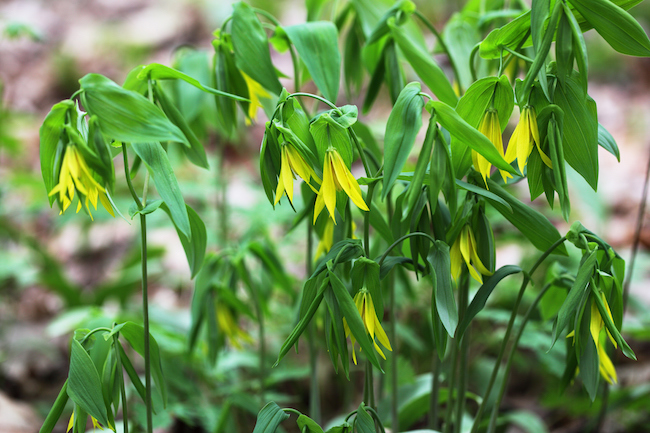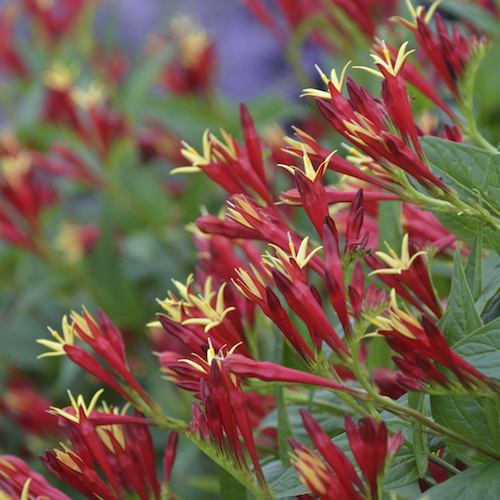There are a lot of Eastern U.S. native perennials that are lesser known and underused we might consider for our gardens. Here are three spring bloomers.

Also called bellwort (Uvularia grandiflora, U. perfoliata), 1- to 2-long yellow flowers dangle like bells in late spring from this foot tall perennial. Grow in full sun to part shade in areas that are more moist than dry. Hardy throughout Indiana, the flowers are pollinated by native bees. Ants spread the seeds and deer eat the young foliage. A large population of deer browsing on merrybells causes them to decline.
Look for this plant at garden centers, but you might find it quicker through online retailers. The uvula part of the name refers to its resemblance to the uvula, that teardrop-looking appendage that hangs in the back of the throat.

An Indiana native plant (Spigelia marilandica), this perennial’s trumpet-shaped flowers look like yellow stars within red stars. Another common name is pink root, which was consumed as a way to expel worms from humans. This is not a good idea because of toxic alkaloids and calcium oxalate crystals.
It blooms in May and June, and does well from full sun to part shade. Good drainage is best. Hummingbirds visit this plant for its nectar. For years, only the seed-grown species was available and it was hard to find. ‘Little Redhead’ was developed with tissue culture recently in Michigan. The flowers have a deeper red and there are more of them. Look for spigelia at garden centers and online plant retailers.

The flowers on this little spring bloomer (Dodecatheon meadia) resemble stars shooting across the sky, leaving a trail of light. A stalk with flowers clustered at the top rises from a rosette of leaves. Most of the time, Eastern shooting star flowers are white. Sometimes, they are pink. Attractive purple and yellow rings adorn the base of the flower.
In some states, shooting star has a protected status because people have been taking it from the wild. Never remove native plants from natural areas. It’s almost always against municipal, state and federal laws. Shooting star blooms in May and June and does best in full to part shade. It tolerates moist to dry soil.
“Queen bumblebees are the most typical visitors of the oddly shaped flowers. They obtain pollen from the flowers by the rapid vibration of their thoracic muscles, which is sometimes called buzz pollination,” according to IllinoisWildflowers.org. You’ll probably have better luck finding this native plant through online retailers. It is a little tricky to get it started from seed or transplants.